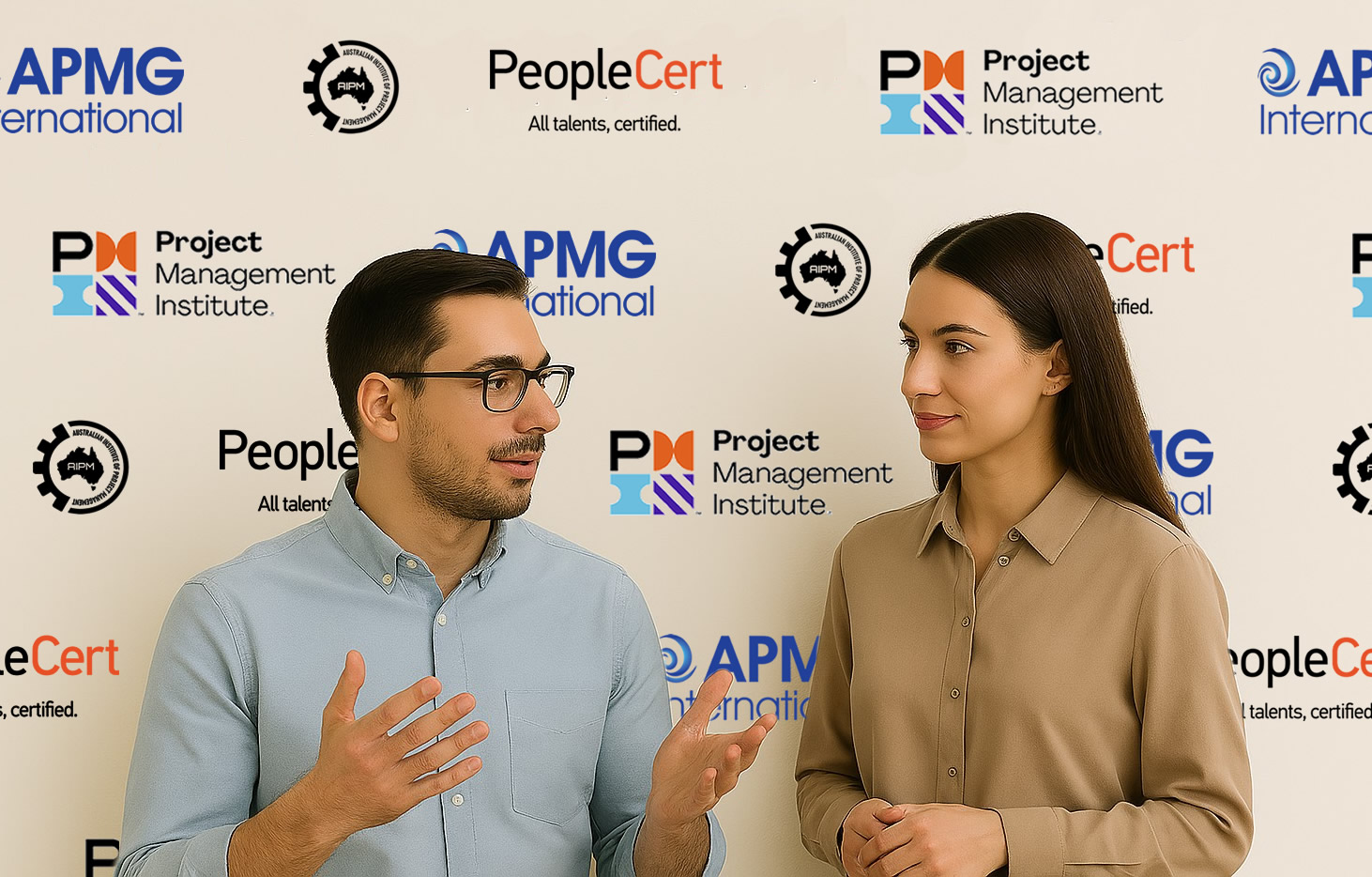Introduction
With a little bit of preparation, taking your PMI certification exam through online proctoring will be easier than sitting the exam at a physical testing centre.
Millpond’s Training Partner, Trinadh Uppalapati shares his experience of recently sitting the PMI-ACP exam through online proctoring. Trinadh recommends following the steps below to ensure you give yourself the best chance of passing your CAPM, PMP or PMI-ACP exam the first time.
Once you have completed your exam application and paid you are able to book your exam. Completing your PMP exam application can take you a few hours as you need to add your project experience and this is carefully scrutinized by PMI, so we recommend that you spend the time to ensure this is right.
A week or two before you sit your exam
- Book your exam through your PMI.org account. Before you can book your exam, you will need to have submitted your application payment and once this has been done, you can then schedule your online proctored exam.
- Read all the instructions that you receive from the exam provider and the organisation whose exam you are about to sit.
- Sort out a space or room with a computer that you can use for the exam. As per our blog you will need to find a room with a good stable internet connection that can easily be made private.
- Plan to use a wired internet connection if possible.
- Pearson Vue also have great resources at Helpful resources for test-takers // Pearson VUE.
- Approximately two weeks before your exam, download the system test from the exam provider’s website onto the computer that you plan to use for the exam. Make sure you have completed the whole test, not just installed it.
- Resolve any issues.
- Run the test again the day before in case the exam shield software or your computer have been updated in the meantime.
- If you plan to take the exam from home, it’s important to inform your family not to disrupt you by opening doors or calling your mobile, among other things. Whenever feasible, put your mobile on silent mode and ensure the door to your room is closed.
- If you are using Wi-Fi ask that others in the house do not use the internet during your exam.
You can also read our Blog which outlines the advantages and disadvantages of taking your PMI certification exam via online proctoring.
On the day of your exam – organise for success
It’s crucial to find maintain a clean and organized workspace for your online proctored exam.
PMI have some strict rules around what you can and can’t have when you sit your online exam. By following these tips below, you can ensure you are well set up.
- Ensure that your laptop is the sole device on your desk. If there are any additional monitors connected, disconnect their power cables to avoid any potential distractions or better still, remove them from the room if you can.
- Keep your workspace uncluttered, free from any papers, or unnecessary materials.
 On your desk, the only items permitted should be your identity documents, such as your passport or driver’s licence, and a water bottle for your convenience. You are also welcome to keep some sweets on hand if you’d like to maintain your energy and sugar levels during the examination but be mindful not to let them clutter your workspace.
On your desk, the only items permitted should be your identity documents, such as your passport or driver’s licence, and a water bottle for your convenience. You are also welcome to keep some sweets on hand if you’d like to maintain your energy and sugar levels during the examination but be mindful not to let them clutter your workspace.- Put your mobile on silent mode and ensure the door to your room is closed and even locked if you are concerned about disruptions.
- If you are using Wi-Fi and sitting the exam at home, check that others in the house do not use the internet during your exam.
- Disconnect any VPNs if you have them.
One the day of your exam – the check-in process
To initiate the check-in, you are provided with three convenient options:
- Scanning a QR code on your mobile device, which guides you through the necessary steps.
- Receiving a registration link via SMS on your phone.
- Directly accessing the check-in process via a web link.
Regardless of the option chosen, the initial step is to identity confirmation, where you’ll be required to present your passport or driver’s licence.
Additionally, you’ll need to capture snapshots of your workspace from all angles, including the front, back, left, and right.
Once you have submitted these, an Online Proctor will initiate the examination process, and someone will contact you either by phone or through the Online Proctor interface. They will request a view of your room and workspace to ensure its compliance with examination rules (no papers, calculators, pencils or/and pens, and nothing on the walls or ceiling which could assist you in the exam, please).
Mastering your exam interface: a smooth start to success
Before starting the exam, familiarize yourself with the Online Proctoring interface. The Online Proctor will guide you through instructions regarding features like ‘Next/Previous’ and the inbuilt Online Proctor calculator.
There’s no need to rush through these instructions; you can take your time to become acquainted with the interface. However, it’s advisable to complete this process during the 30-minute check-in period. For instance, my exam was scheduled for 6:15pm, and I commenced the check-in process at 5:45pm. By 6:00pm, I had completed the check-in and taken the time to understand the navigation features within the proctoring system.
Unobtrusive exam navigation: tailoring your view for success
Once the exam begins, a video feed will appear in the header. It will automatically adjust to the top banner of your screen to avoid obstructing your view of the questions. You have the freedom to position this banner wherever you prefer, but it’s recommended to keep it in the header for minimal distraction while reading and answering the questions.
Start strong, read slow, finish fast: navigating your exam questions
Reading the first question can often lead to some initial tension, which is perfectly normal.
My advice is not to rush into the first question but to take a moment to clear your mind of any tension. Once you feel more at ease, start reading the question.
It’s common to take some time to grasp the logic behind a few questions, and this is entirely normal. Consider it a warm-up period during which your brain becomes accustomed to the question formats. You’ll likely find that after the first five questions, you’ll pick up the pace and approach the questions with greater confidence.
Still worried?
This short video gives a helpful overview of running the Pearson Vue system test properly, what to expect when you come to get into the exam and other parts of the experience that may be of concern:
Pearson VUE Online Exam Tips (What you need to know before you do your certification) – YouTube
PMI’s website also has some details and resources around Online Proctored testing which is well worth a look.
https://www.pmi.org/certifications/certification-resources/process/online-proctored-testing
If you’d like to discuss whether sitting your exam online is right for you, or talk about any concerns that you have, please get in touch.
FAQ’s
Can you do the PMP exam online?
Yes.
Your exam is made up of 3x mini exams containing 60 questions each. You’ll answer and review the first 60 questions then submit them. A 10min break is available for you to leave the room, use the bathroom and eat or drink anything quickly. You’ll then repeat this process for the next 60 questions. You cannot return to the first set of questions after the break. They are locked in for marking.
Is 70% enough to pass PMP?
PMI does not disclose the pass rate. You will not receive a score and you will not know which questions you answered correctly. Your result will be scored across a range from Needs Improvement, Below Target, Target, Above Target.
Is PMBOK 7 enough to pass PMP?
No. PMBOK Guide 7 is not enough to pass the PMP. The PMP Exam is based on the PMP Exam Content Outline (ECO) and the PMBOK Guide 7 is an optional reference book for the PMP exam. Studying the PMBOK Guide is not essential to pass the PMP exam and the PMP exam is not a test of the PMBOK Guide.
What is the hardest part of the PMP exam?
PMP questions are scenario-based. They give you a brief description of project state, problem and require you to select the best answer to the question, which normally refers to a solution.
Most will be multi-choice (single answer). Some will be multi-choice (multi-answer). Additionally, there can be hot spot, list or explanation methods although these are rare.
In PMP exam questions, you’ll notice some or all the answers could solve the problem detailed in the question. You must select the most-correct answer. This is difficult, but something we teach you during your PMP training with us.
Are PMP exam results instant?
Yes, you will find out once you finish your online exam if you have passed.
Conclusion
Hopefully by now after reading the above, you’ll be feeling more informed and comfortable taking your PMI certification exam online in the comfort of your own home or office. By following the advice and my personal experience, along with the helpful links to resources throughout this Blog, we’re sure that you’ll be able to give yourself the best shot at passing your exam through Online Proctoring.
Not quite what you’re looking for?
Other blogs
of interest






